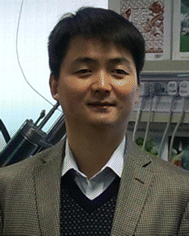Fundamental insights into interfacial catalysis
Jinlong
Gong
*a and
Xinhe
Bao
*bc
aKey Laboratory for Green Chemical Technology of Ministry of Education, School of Chemical Engineering and Technology, Tianjin University, Collaborative Innovation Center of Chemical Science and Engineering, Tianjin 300072, China. E-mail: jlgong@tju.edu.cn
bState Key Laboratory of Catalysis, iChEM, Dalian Institute of Chemical Physics, the Chinese Academy of Sciences, Dalian 116023, China. E-mail: xhbao@dicp.ac.cn
cDepartment of Chemistry, Fudan University, Shanghai 200433, China
Abstract
Surface and interfacial catalysis plays a vital role in chemical industries, electrochemistry and photochemical reactions. The challenges of modern chemistry are to optimize the chemical reaction processes and understand the detailed mechanism of chemical reactions. Since the early 1960s, the foundation of surface science systems has allowed the study of surface and interfacial phenomena on atomic/molecular level, and thus brought a number of significant developments to fundamental and technological processes, such as catalysis, material science and biochemistry, just to name a few. This themed issue describes the recent advances and developments in the fundamental understanding of surface and interfacial catalysis, encompassing areas of knowledge from metal to metal oxide, carbide, graphene, hexagonal boron nitride, and transition metal dichalcogenides under ultrahigh vacuum conditions, as well as under realistic reaction conditions.
Rational and scientific design of efficient catalysts is crucial to improve the performance of chemical reactions. The development of ceria-metal model catalytic systems is the topic of the contribution by Rodriguez et al. (DOI: 10.1039/C6CS00863A), in which the surface reactions of CO oxidation, the water–gas shift, CO2 hydrogenation, and methane and alcohol reforming are extensively covered, providing substantial fundamental knowledge and concepts, which may be helpful for the rational design of efficient ceria-based catalysts. The contribution by Diebold et al. (DOI: 10.1039/C7CS00076F) shows that the physical and chemical properties of metal oxides can be influenced by defects, such as oxygen vacancies, cation vacancies, and cation interstitials. The surface chemistry of defects from three prototypical systems are reviewed and discussed, including TiO2, iron oxides (Fe3O4), and indium oxide (In2O3). Tuning the surface electronic state is in fact another key point in the rational design of efficient catalysts and improving the performance of chemical reactions. The state-of-the-art in the measurement and tuning of electron spins of alien atoms and molecules has been illustrated by Wu et al. (DOI: 10.1039/C6CS00891G), focusing on recent experimental measurements and chemical modifications of electron spin states of the alien entities on well-defined substrates.
The formation of carbides can sometimes dramatically improve the catalytic properties of the parent metals. In the review by Chen et al. (DOI: 10.1039/C6CS00862C), the thermal reactions and electrochemical reactions of water and C1 molecules (CO, CO2, CH3OH, etc.) over transition metal carbide (TMC) and metal-modified TMC surfaces and thin films are discussed intensively. Encapsulating thin two-dimensional (2D) materials on the surface of metal catalysts provides intriguing confined spaces for catalytic reactions. In the contribution by Fu and Bao (DOI: 10.1039/C6CS00424E), the confinement effects of well-defined 2D material overlayers such as graphene, hexagonal boron nitride, and transition metal dichalcogenides are extensively reviewed and discussed. In particular, new concepts of “catalysis under cover” and “electrochemistry under cover” have been proposed, which may exhibit improved performance in a variety of important processes of heterogeneous catalysis, electrochemistry, and energy conversion.
Water also plays an important role in a variety of surface and interfacial processes, such as photocatalytic water splitting, heterogeneous catalysis, and electrochemistry. Gong et al. (DOI: 10.1039/C6CS00864J) highlight recent relevant studies focusing on the interactions of water, in the form of isolated water monomers, small water clusters, long water chains and interfacial water in liquids, with regular non-defective surface sites on metal oxide surfaces.
The investigations of single crystal surfaces under ultrahigh vacuum conditions have been developed as a useful approach to understand surface reactions but the so-called “pressure gap” and “materials gap” often exist between surface science studies and real catalytic reactions. However, most surface and interfacial catalysis occurs at ambient pressure, thus the in situ/operando techniques that could monitor surface properties are highly necessary. The contribution by Tao et al. (DOI: 10.1039/C6CS00931J) illustrates the origin of the difference between ex situ and in situ/operando studies of catalysts, and the technical challenges and corresponding instrumentation and innovations in characterizing catalysts under reaction conditions. Wang and Wöll (DOI: 10.1039/C6CS00914J) intensively review the application of infrared reflection absorption spectroscopy (IRRAS) for thermal reactions and photosimulated reactions on ZnO, TiO2 and CeO2 from single crystal substrates to oxide powders. The effect of defects on the surface chemistry of oxides is also discussed. On the other hand, uniform catalytic nanocrystals with well-defined surface structures can be studied under the same conditions as the real catalytic reactions to overcome the “materials gap”. The contribution from Huang et al. (DOI: 10.1039/C6CS00828C) reviews the recent progresses in the surface chemistry of Group IB metals and related oxides from single crystal-based systems to nanocrystal-based model catalysts and real supported catalysts.
The concepts of surface and interfacial catalysis have also been applied in the field of biomass conversion and photoelectrochemical (PEC) water splitting reactions. One of the major issues to overcome in PEC processes is to achieve a stable solid/liquid interface in either strongly basic or acidic electrolytes. The contribution by Chorkendorff et al. (DOI: 10.1039/C6CS00918B) reviews the fundamental aspects of protection strategies for interfacial reactions and charge transfer mechanisms, which may present better PEC solar water splitting systems.
In summary, these outstanding contributions have been aimed to provide a broad vision of the surface and interfacial catalysis of single crystal-based model catalytic systems and nanoparticle catalysts for CO oxidation, water–gas shift, CO2 hydrogenation, methane and alcohol reforming, biomass conversion and PEC solar water splitting reactions. These high quality papers appear in this special issue of Chemical Society Reviews.
Both guest editors are indebted to all the contributors of this themed issue for providing their most high profile manuscripts, which will surely make this special issue a great success, as well as the referees for their dedication and responsibility. We also would like to thank the editorial team of Chemical Society Reviews, particularly Mina Roussenova, Cesar Palmero, Laurent Mathey, Liisa Niitsoo, and the Royal Society of Chemistry for the possibility to assemble this special issue throughout all the stages.
| This journal is © The Royal Society of Chemistry 2017 |


